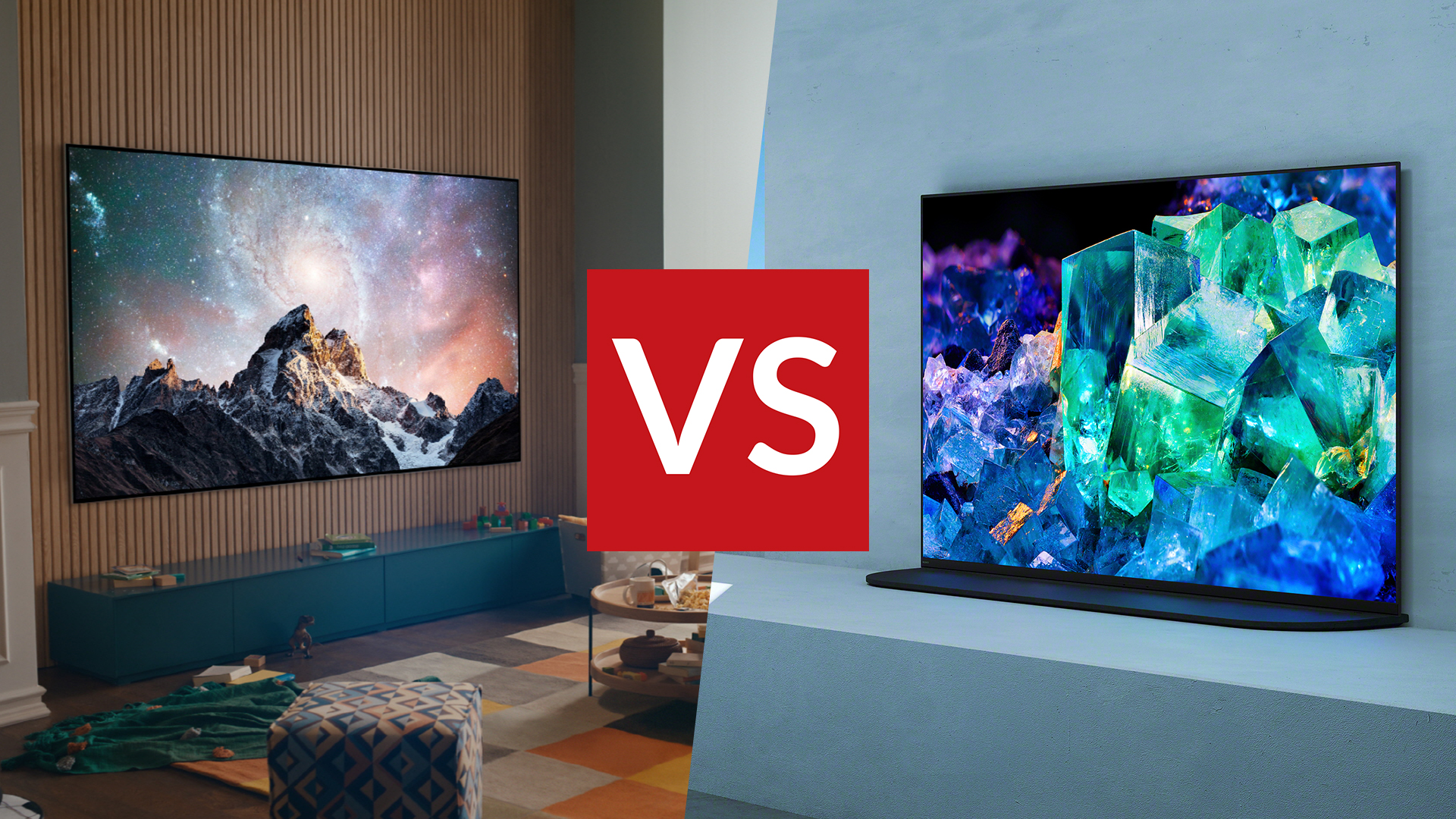
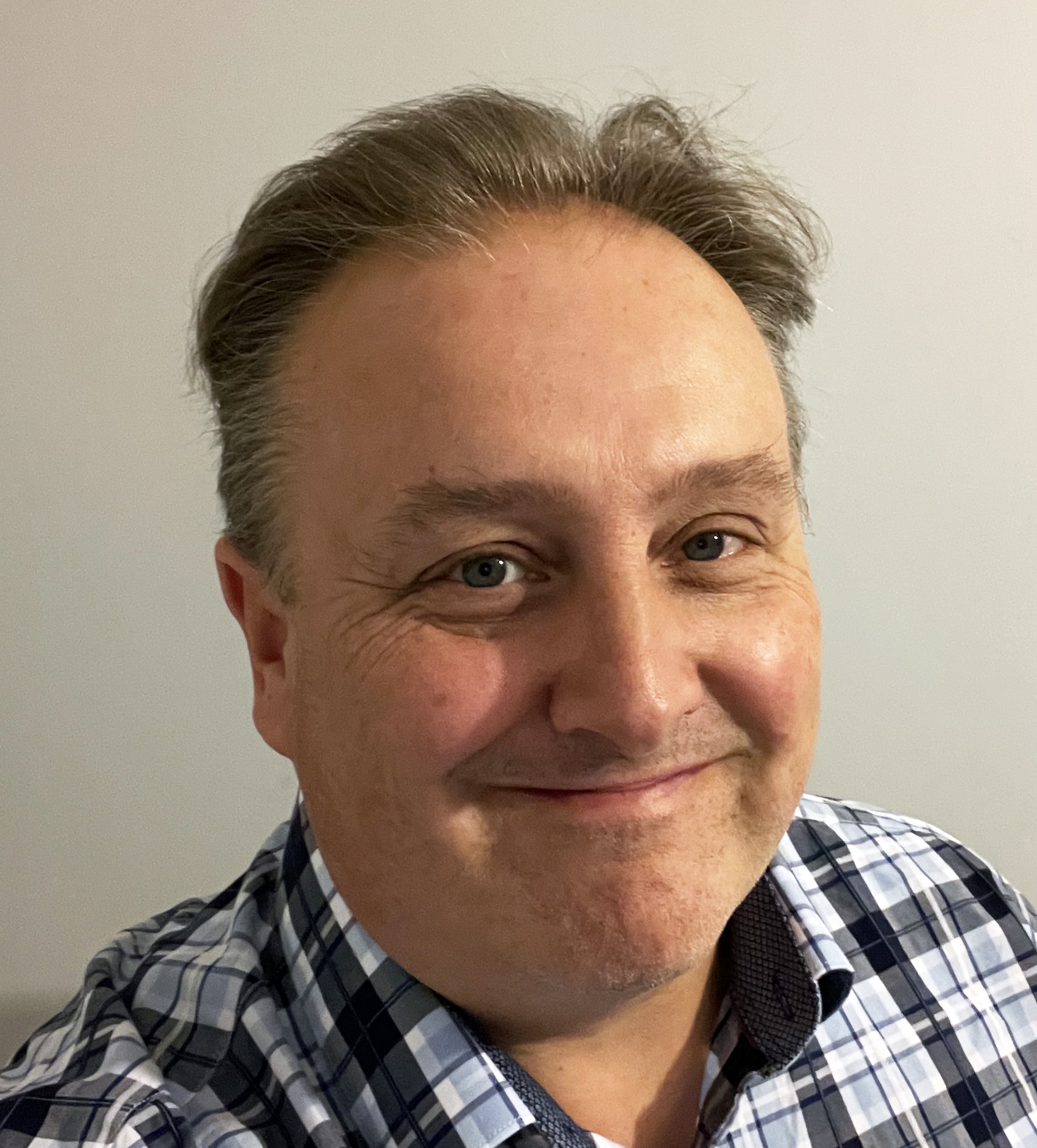
If you're looking at what the hottest TVs of 2022 will be, you need to be looking at the battle between the LG G2 and the Sony A95K: the flagship 4K TVs from two of the biggest and best TV makers.
After years of consistently great picture quality, lots of processing improvements but relative stagnation on the hardware front, the world of the best OLED TVs suddenly exploded back into life in 2021.
Multiple brands launched OLED models sporting shiny next-gen panels designed to deliver significant picture quality enhancements – and that included LG and Sony. The LG G1 and Sony A90J were two of the best TVs available last year, but obviously these TV makers aren't resting on their laurels.
If the new LG G2 and Sony A95K 2022 OLED TVs are anything to go by, the sudden onslaught of OLED advances isn’t slowing down again any time soon – these will absolutely lead the way in our lists of the best LG TVs and best Sony TVs. But what are the difference, and which should you be keeping your eye on for when our reviews arrive? Here's what you need to know.
LG G2 vs Sony A95K: Price and Models
The LG G2s will be available from spring 2022 – most likely March – in 55-, 65-, 77-, 83- and 97-inch screen sizes. And no, that wasn’t a typo; there really is going to be a 97-inch G2, breaking new size ground for LG’s OLED offering.
Sony’s A95K range, by comparison, will be limited to just 55 and 65-inch sizes. Launch dates haven’t yet been confirmed, though, and initial rumours emanating from the CES in January suggested that Sony’s new high-end TVs might not emerge until much later in 2022 – maybe even the last quarter of the year.
The appearance of the A95K on Sony websites already, though, alongside the words ‘coming soon’, make a spring/early summer launch seem more likely, but because it uses an all-new TV technology (as we'll come to), it's hard to be sure.
Sign up to the T3 newsletter for smarter living straight to your inbox
Get all the latest news, reviews, deals and buying guides on gorgeous tech, home and active products from the T3 experts
At the time of writing, pricing for both the LG G2 and Sony A95Ks hasn’t been confirmed. We can probably expect, though, the G2s to track fairly close to the prices of last year’s G1s, which launched at £1,999/$2,199 for the 55-inch, £2,999/$2,999 for the 65-inch and £4,799/$4,499 for the 77-inch.
The A95Ks will likely attract a significant premium over Sony’s flagship 2021 OLED TVs, the A90Js, for reasons we’re about to get into, but current indications are to expect the 55-inch model to cost around £3,000/$3,000.
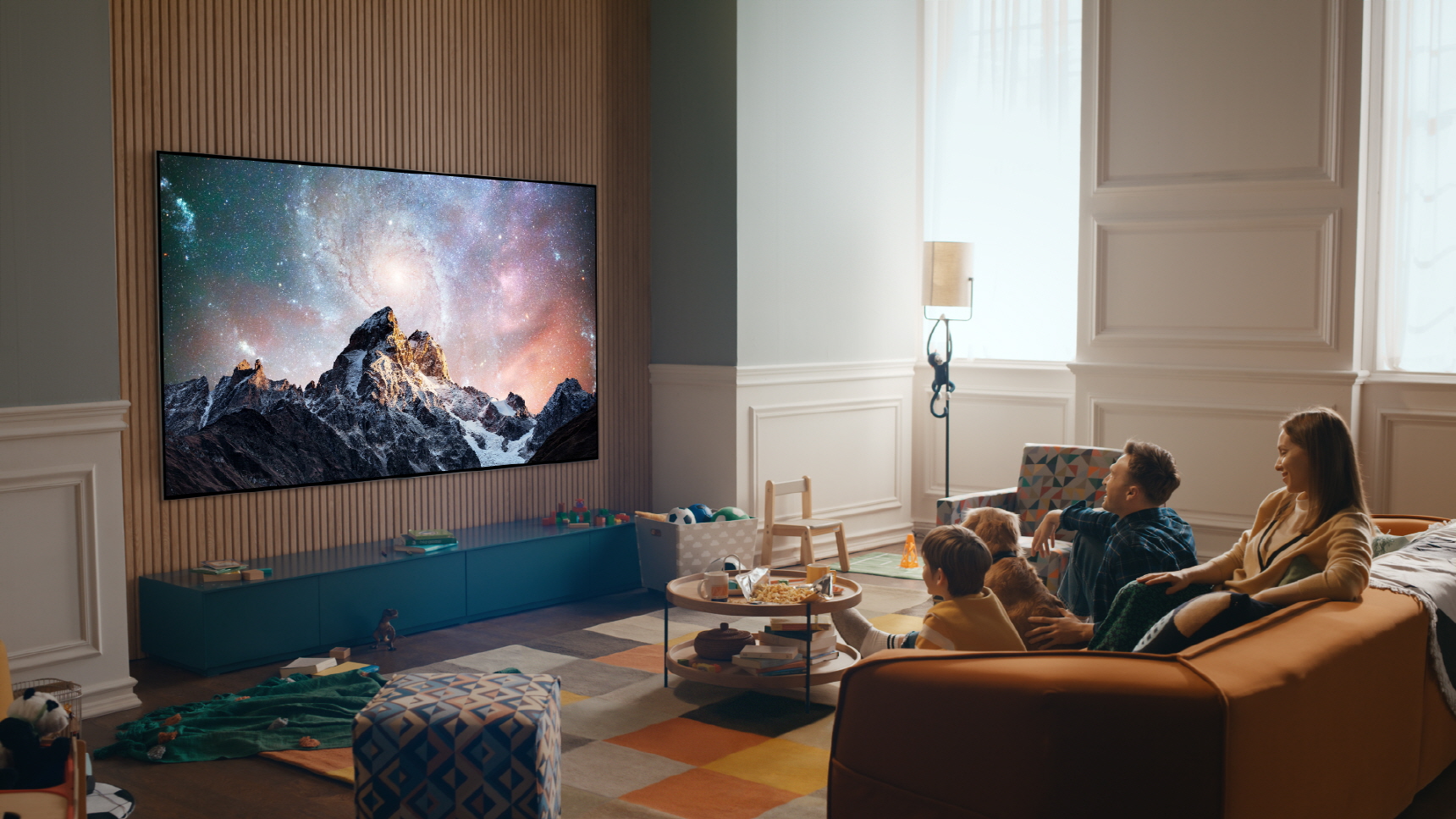
This family is enjoying the 97-inch LG G2 wall mounted in their very chic home.
LG G2 vs Sony A95K: Picture quality
While both the LG G2 and Sony A95K introduce new hardware innovations, the nature of those innovations is quite different.
The big story with the G2 series is that it adds an extra heat-sink layer to the configuration of last year’s already brightness-boosted ‘Evo’ G1 series. This will enable the G2 to run brighter still, without increasing its susceptibility to screen burn. Heat is the main danger to OLED TVs for burn-in, so having a more advanced way to absorb heat away from the panel means you can push the brightness further.
Assuming this extra brightness comes without spoiling the black-level prowess LG OLED TVs are renowned for, the G2s should deliver some of the most impactful and accurate high dynamic range (HDR) pictures ever seen on an OLED TV.
As an aside, LG won’t confirm if the LG G2 is using the new OLED EX type of high-brightness panel announced by LG Display (a different division of LG to its TV business) ahead of the January CES.
The Sony A95K, however, uses a whole new category of OLED technology based around the Quantum Dot colour system previously found only in LCD TVs, including Samsung's famous QLED TVs. So whereas the OLED TVs we’ve been used to seeing for the past decade or so have all been based around a structure that combines white, red, green and blue OLED pixel elements, the A95K's QD-OLED system uses a blue OLED light-emitting pixel layer that feeds its light into red and green Quantum Dot layers.
Removing the white pixel element from the mix enables QD-OLED to potentially deliver richer, purer, brighter colours. In fact, Sony claims that the A95Ks can produce 200% more colour brightness than ‘regular’ OLEDs.
Sony also claims the A95K delivers better viewing angles, despite regular OLEDs hardly being slouches in this respect.
Incidentally, while we call this new panel technology QD-OLED, Sony has so far referred to it as 'New OLED' – an annoyingly vague term. So we'll mostly call it QD-OLED.
Both the LG G2 and Sony A95K feature improved versions of impressive existing picture processing engines. The G2 will carry the fifth generation of LG’s Alpha 9 processor, while the A95K will get the second generation of Sony’s Cognitive XR processor.
There are too many small similarities and differences between these systems to sensibly cover in detail here, but their overall approaches can perhaps rather crudely be summed up as both increasingly using AI systems to provide superior automatic picture optimisation, while LG focuses more on trying to recreate pictures as they were mastered and Sony seems more interested in making images look closer to how our eyes see the real world.
To be clear, though, there are some pretty big areas of crossover in these image philosophies. Neither is necessarily better – it'll depend on how they're applied in practice, and how well they combine with the panels once we've tested them properly.
One final intriguing picture feature the A95K gets that the LG G2 doesn't is the Bravia Cam. This magnetically attached camera can monitor your viewing position, taking into account how close you are to the screen and adjusting the image’s brightness accordingly to enhance the experience.
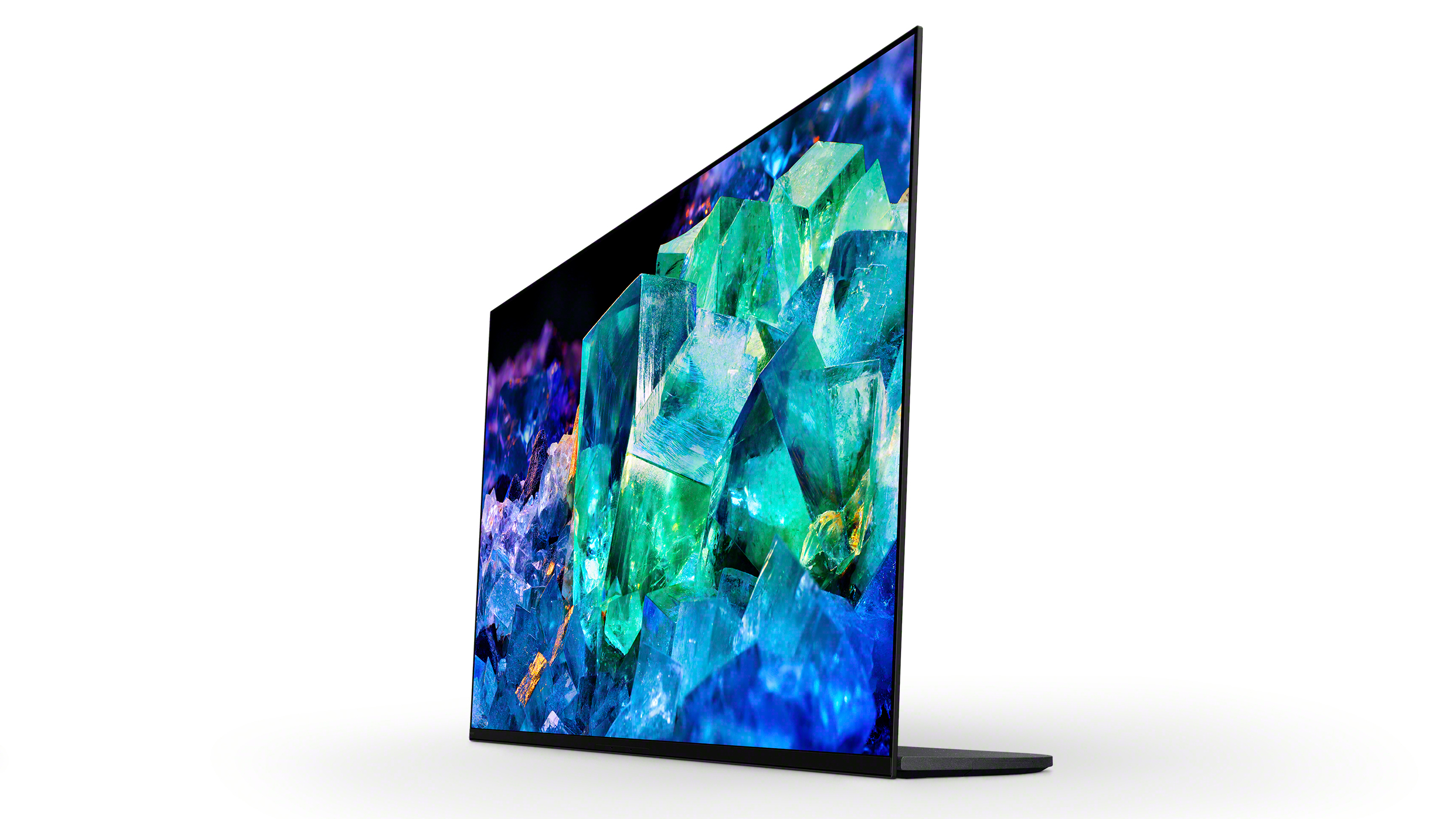
The Sony A95K uses the screen itself as a speaker, effectively. It's a very clever, great-sounding system.
LG G2 vs Sony A95K: Sound quality
The A95K look as if it's got more going on in the audio department than the G2s. For starters, it continues to run with the Acoustic Surface technology that’s been exclusive to Sony OLEDs for generations now. Actuators placed behind the OLED panel make the TV’s screen produce sound, resulting in audio that pushes directly forward into your room much more effectively and immersively than the rear-mounted speakers you get with most of today’s TVs.
The Acoustic Surface approach also typically delivers a very open, smooth mid-range, and can also get sounds to track the onscreen position of noisy objects as they move around the image.
As you’d expect, the A95K gets the premium version of Acoustic Surface sound, where the two 20W actuators (which have been optimised to suit the new QD-OLED panel) are partnered with two 10W subwoofers to boost bass.
The G2 OLED deploys a more standard audio system where the speakers are integrated into the TV’s svelte bodywork.
Both TVs support Dolby Atmos sound, and the G2’s carriage of more drivers than the A95K has the potential to handle Atmos soundtracks better. This advantage, though, has tended to be undermined with recent LG OLED generations by the difficulties associated with trying to get lots of power and dynamic range from speakers small enough to fit into ultra slim TVs.
Let's be clear, with TVs like this, you should be combining them with one of the best soundbars or best surround sound systems anyway.
The G2s and A95Ks will all benefit from systems for upmixing stereo soundtracks so that they sound more three-dimensional and Atmos-like.

The Sony A95K's reversible stand is slim and gives a cool modern-art look.
LG G2 vs Sony A95K: Design and Features
The G2 benefits from an elegant new refinement of LG’s distinctive wall hanging-friendly ‘Gallery’ design. This reduces the frame round the screen to just 6mm across, and replaces the previous chamfered sides with a sleeker-looking, flatter, dual-layer effect that makes the G2 look even more elegant and futuristic than its predecessor.
LG has also switched to a new composite fibre material for the G2’s bodywork which, for instance, knocks 6kg off the weight of the OLED65G2 versus the OLED65G1. This makes the latest Gallery design even more well-suited to wall hanging. We assume that, as with last year, the G2 won't come with a stand in the box – it's that focused on being wall-mounted.
The Sony A95K looks pretty similar in some ways to last year’s A90J. So that means extremely slim, black-framed screens designed to deliver subtle, understated elegance rather than the slightly showier look of the G2.
The A95K can be wall hung, though it's not as specifically designed for that as the G2. In fact, a key feature of the A95K design is the way it can be slotted into either the front or back of a distinctive flat metal plate desktop mount.
We’ve already covered many of the key differences between the G2 and A95K OLED TVs. The G2 scores one further big feature advantage over the A95K, though, by making all four of its HDMI inputs support the full gamut of cutting-edge gaming features (4K/120Hz, variable refresh rates, and automatic low latency mode switching) whereas only two of the A95K’s HDMIs support these features.
One final area of major difference between the G2 and A95K TVs is their smart systems. The G2 uses the latest version of LG’s renowned webOS platform, while the A95K uses Google TV.
In days gone by, when Sony was using the older Android TV platform, this would have been an easy win for LG. The revamp of LG’s webOS system introduced last year, though, is still finding its feet versus the older webOS platform, while Google TV is much more attractively presented and helpfully organised than Android TV.
LG G2 vs Sony A95K: Conclusion
Both the LG G2 and Sony A95K look set to deliver substantial picture performance improvements respectively over any previous LG OLED and any previous OLED TV, period.
Based on what we know and can surmise now, though, the Sony A95K is looking the most likely to find themselves right at the top of the wish-lists of serious AV fans who simply want the absolute best picture quality available in 2022 no matter how much it costs.
With 2022 shaping up to be a year of shrinking disposable incomes, however, the G2 may end up being the best TV that most AV fans can actually afford. The extra gaming-friendly inputs and experience may win over gamers, too, while the larger screen size options might also attract consumers looking for more of a home cinema experience.
John Archer has been testing TVs and AV gear for over 25 years, having worked on Home Cinema Choice magazine. He's a contributor to Forbes, TechRadar, Trusted Reviews, Wired and many more places – if you've owned a TV in the last couple of decades, John's probably reviewed it somewhere. He's seen so many hot new technologies come and go, like tears in the rain.
-
 Garmin’s on a mission to update your wrist into oblivion as 100+ tweaks land on Fenix and Enduro watches
Garmin’s on a mission to update your wrist into oblivion as 100+ tweaks land on Fenix and Enduro watchesThe latest beta update looks comprehensive
By Matt Kollat Published
-
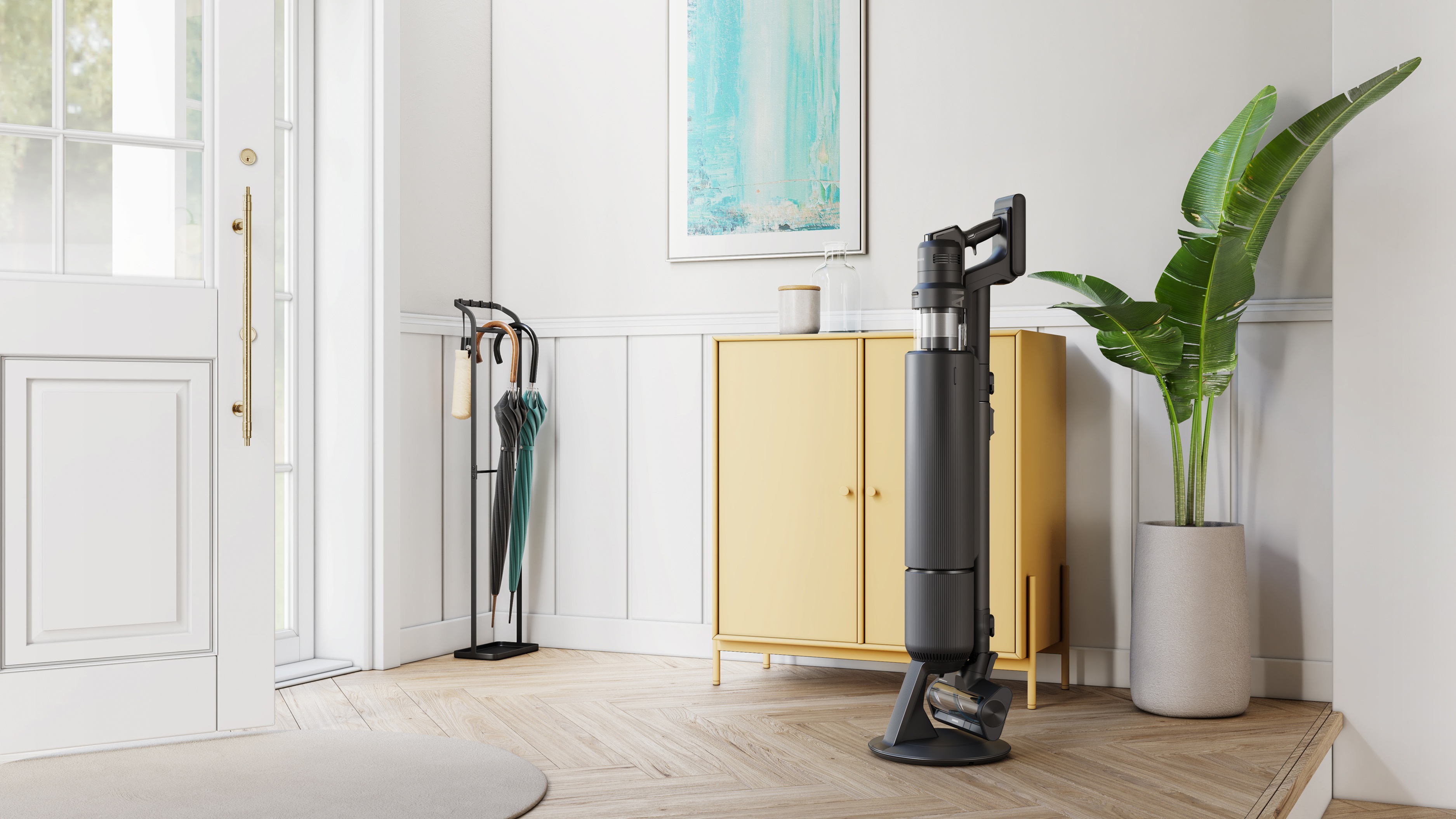 5 reasons you should be excited about the brand new Samsung Bespoke AI Jet Ultra
5 reasons you should be excited about the brand new Samsung Bespoke AI Jet UltraNot sure if it’s obvious... but I can't wait to try it
By Lizzie Wilmot Published
-
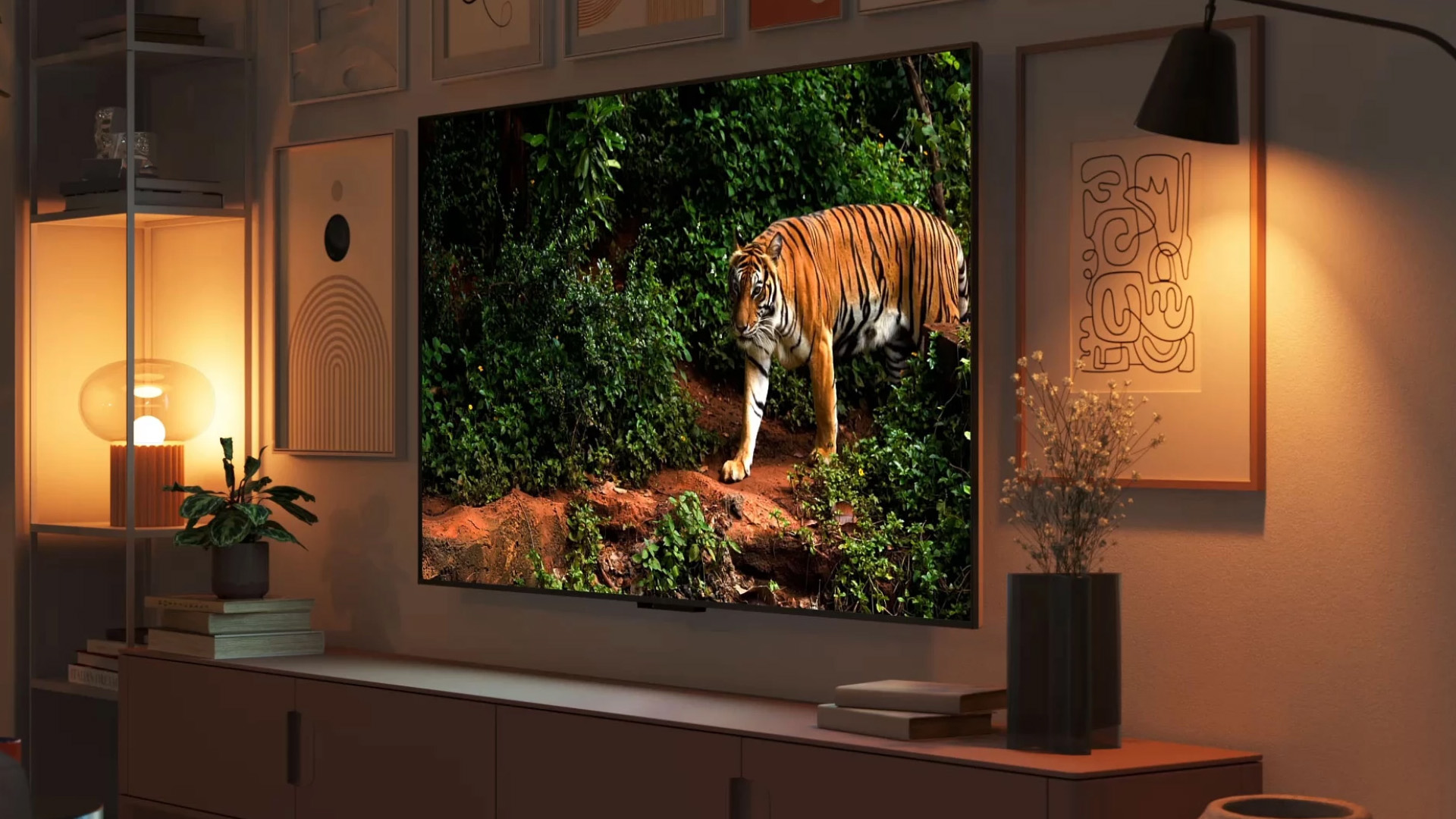 Amazon Fire TV Omni Mini-LED 4K TV review: a huge step up in performance
Amazon Fire TV Omni Mini-LED 4K TV review: a huge step up in performanceAmazon's second-gen Fire TV and first Mini-LED TV is a great option
By Steve May Published
-
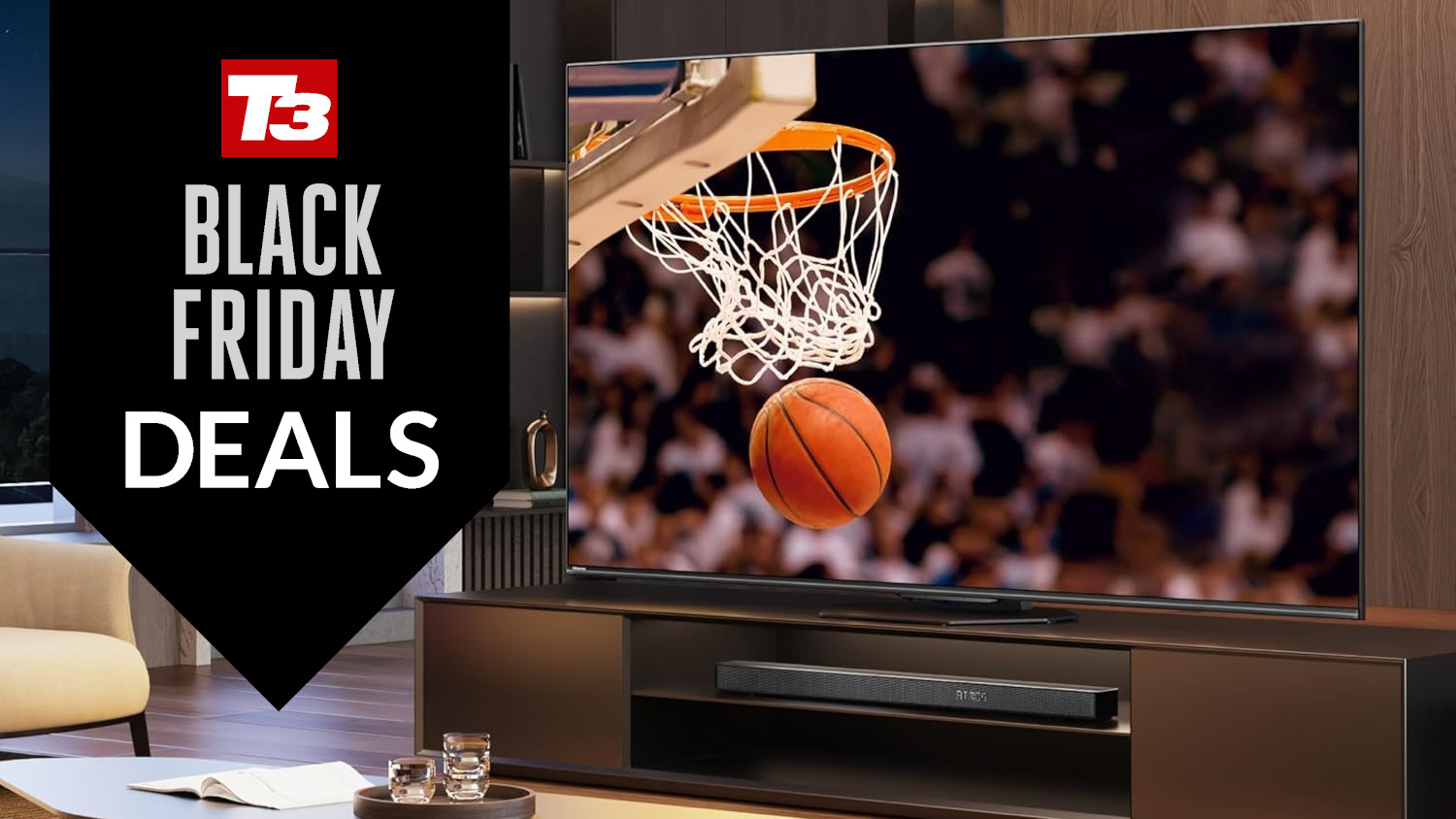 Early Black Friday deal sees price of massive 75-inch TV slashed
Early Black Friday deal sees price of massive 75-inch TV slashedYou'll even get a free copy of NBA 2k25
By Sam Cross Published
-
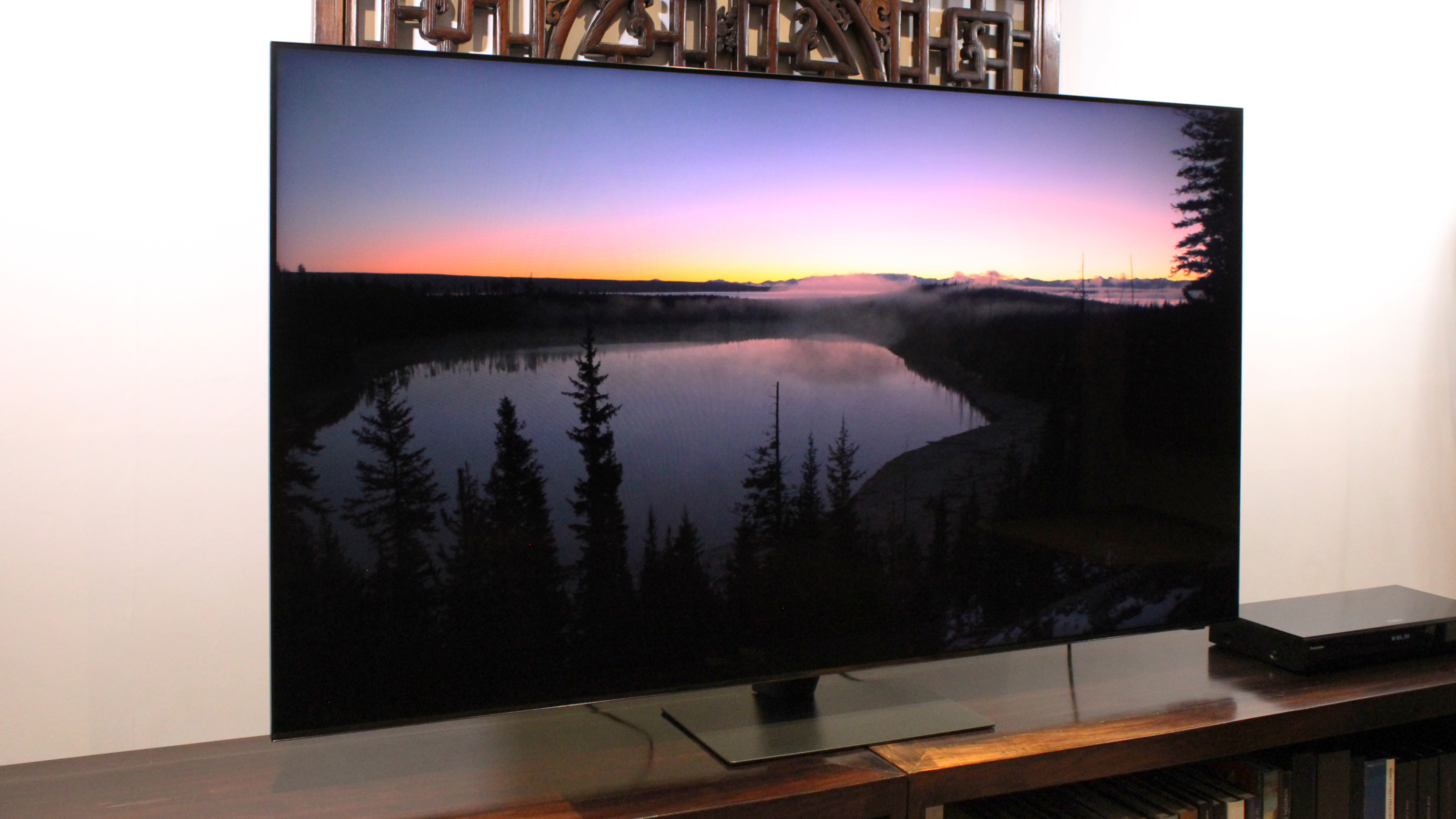 Your Samsung TV just got its biggest free upgrade yet
Your Samsung TV just got its biggest free upgrade yetOne UI is rolling out to the latest Samsung TVs now
By Britta O'Boyle Published
-
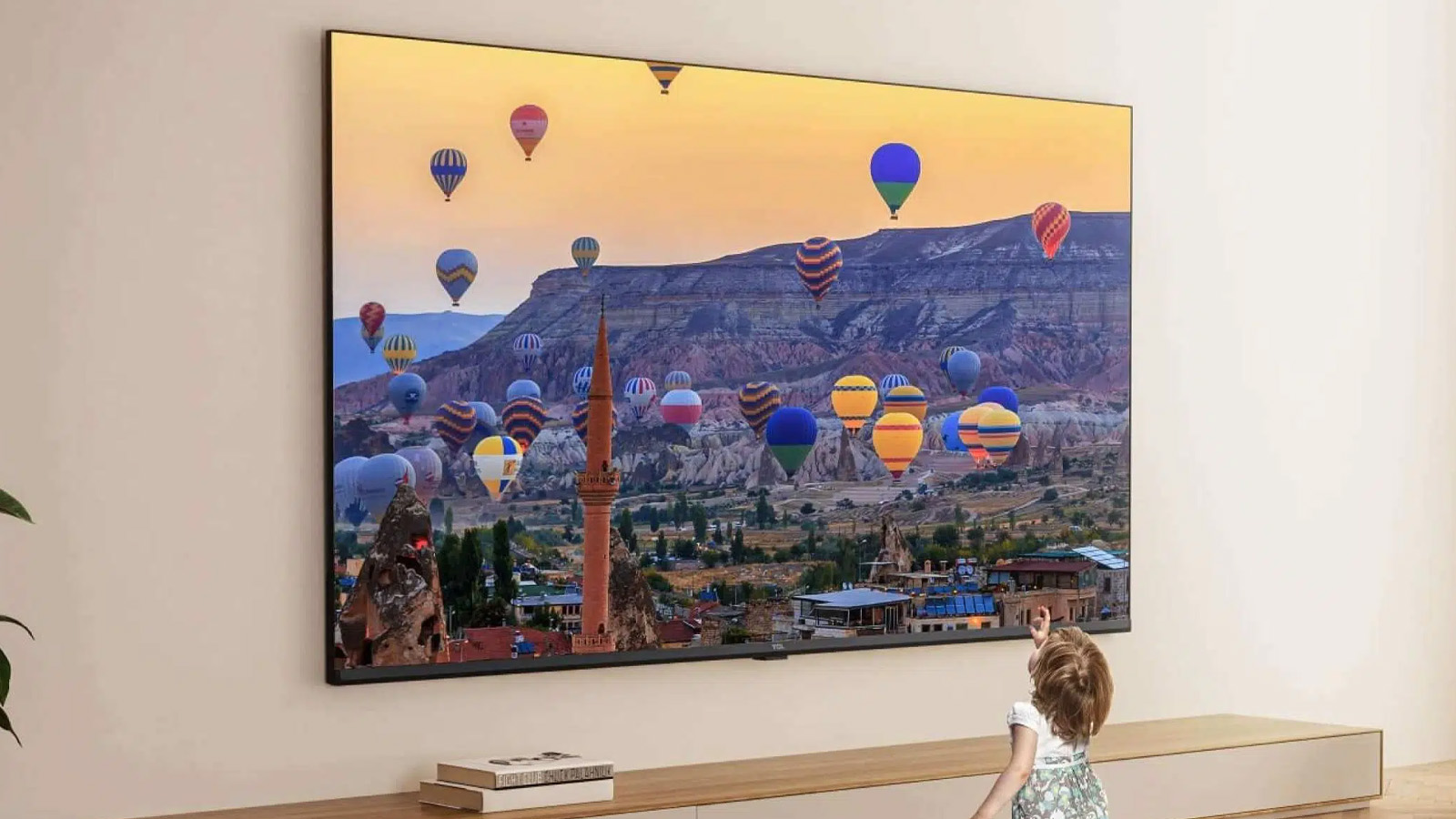 This ultra-bright mini-LED TV is the display of my dreams
This ultra-bright mini-LED TV is the display of my dreamsTCL's next flagship looks fantastic
By Andy Sansom Published
-
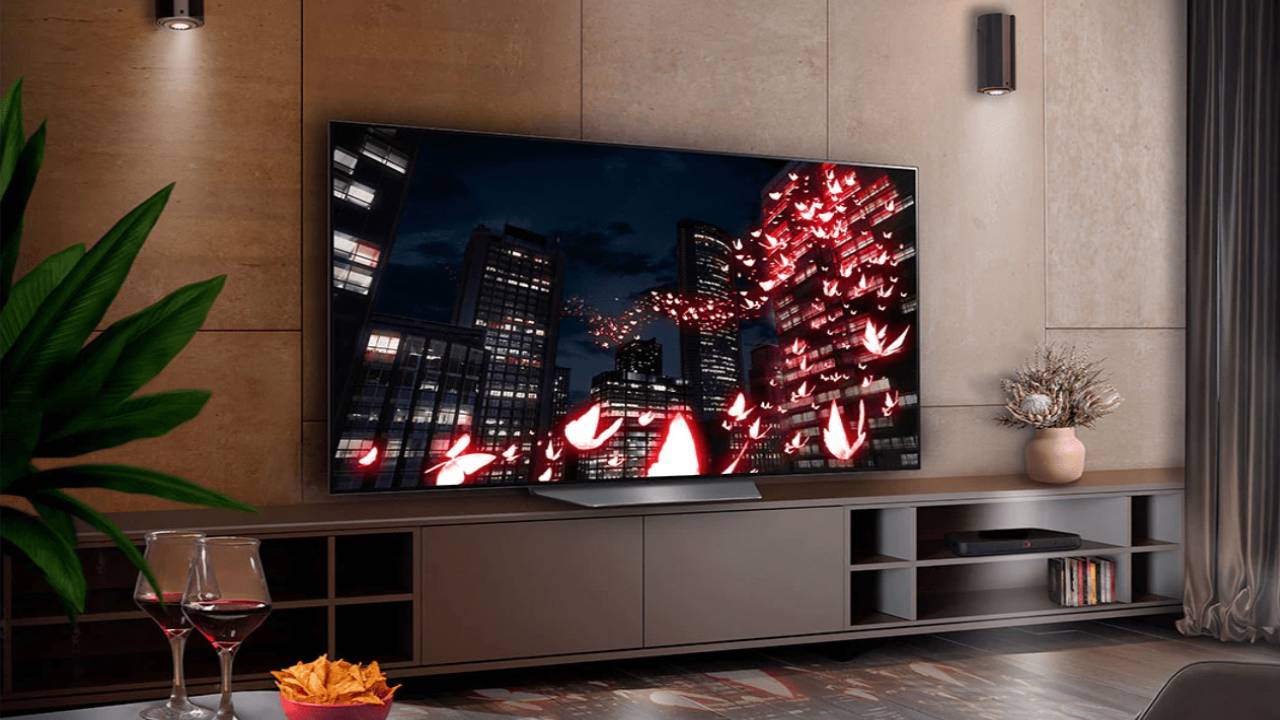 LG TV owners just got Apple TV+ for free
LG TV owners just got Apple TV+ for freeNo matter if you have an LG OLED TV or an LED model, you just got Apple TV+ for free
By Robert Jones Published
-
 Samsung smart TV owners just got a welcome image upgrade
Samsung smart TV owners just got a welcome image upgradeHDR10+ comes to the Apple TV app on Samsung Smart TVs
By Carrie Marshall Published
-
 My LG C1 OLED TV makes The Darkness look incredible on Xbox Series X
My LG C1 OLED TV makes The Darkness look incredible on Xbox Series XThis classic first-person shooter is taken to a new level of awesome thanks to OLED TV tech
By Robert Jones Last updated
-
 TV deals in the Amazon Prime Early Access Sale from Samsung, LG and more
TV deals in the Amazon Prime Early Access Sale from Samsung, LG and moreBlack Friday deals have come early with these TV deals as part of Amazon's Prime Early Access Sale
By Mat Gallagher Last updated